After a pleasant breakfast at the Siwa Safari Gardens, we headed out to see the highlights of the oasis.

We met our desert driver, Fathi, who would escort us around the area in his Toyota 4WD Land Rover proudly sporting a Native Siwa Association sticker.


The lakes and palm groves of the Siwa Oasis are punctuated with rocky outcroppings that qualify as "mountains" locally. The easiest way to get an overview of the area is to climb up one of these hills and look around. We began at Gebel Dakrour (Dakrour Mountain, and also referred to as Gebel Takrour in some publications) about two miles east of the downtown area - seen below in the distance from another mountain, the cemetery mountain of the dead.
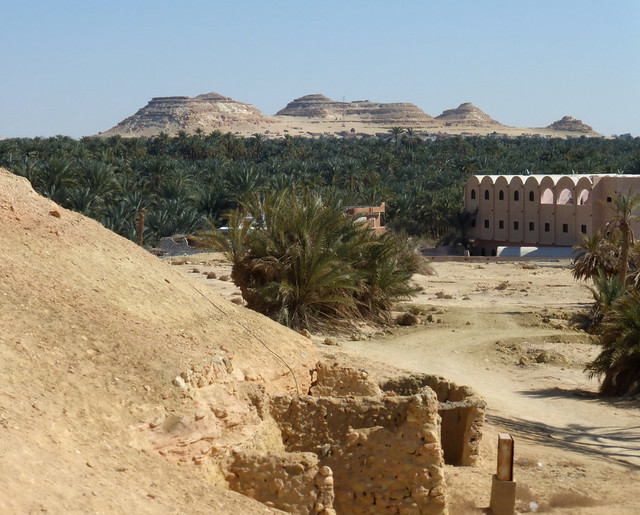

Aside from the scenic view, the four peaks of Dakrour Mountain don't hold a lot of attraction except during the time of the date harvest and full moon each October. At that time it is the site of a reconciliation festival, where the local men gather for three days and pledge peace and serenity among people for the new year. The festival is a holdover from ancient days when the Eastern tribes and Western tribes of the Oasis were at war with each other. Egypt Daily News reports from the 2019 festival here. The article notes that the whole community attends, although a sharp-eyed reader, checking the accompanying photo, might notice that approximately half of the community is not in attendance at the mountain - they are at home preparing the food for the grand finale.
From the top of Dakrour Mountain there is a good view of one of our future stops, the Temple of Amun.

Next up was a visit to the salt lagoons, just a few short miles east of Dakrour Mountain. These lagoons, a result of mining the local salt deposits, are a fairly recent addition to the local tourist agenda and geography. As the mining equipment harvests salt in the background, tourists have the opportunity to float in extremely concentrated salt water pools of varying shapes and sizes.
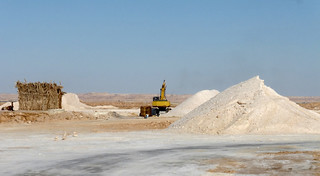
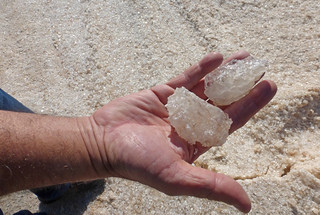
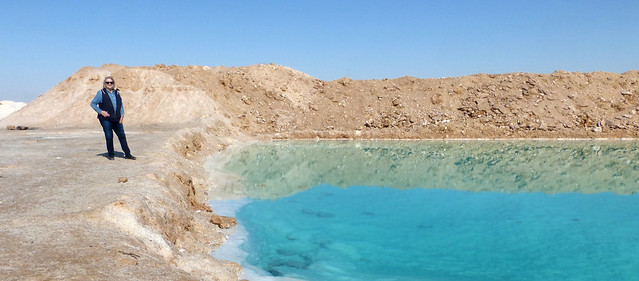
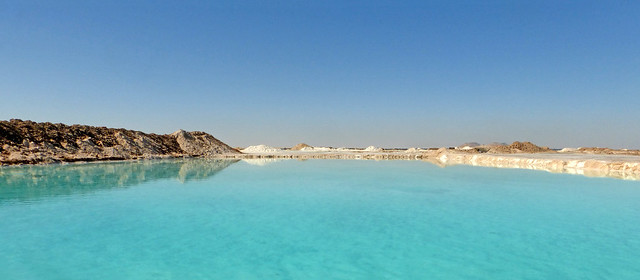
A larger group in buses arrived ready to take a salty plunge.
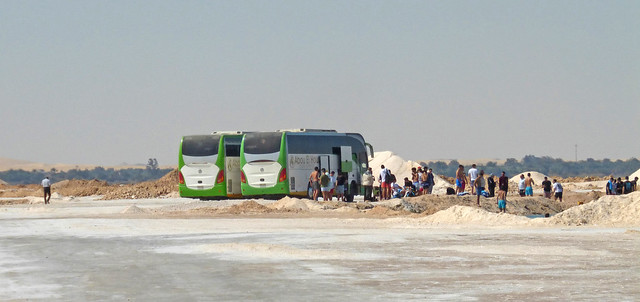
It appears that many people find the salt bathing therapeutic as well as relaxing and adventurous. Bring a bathing suit, or just soak your feet.


Returning from the salt lagoons, Fathi pulled over for a nice photo of the peaks of Dakrour Mountain reflected in the water.
The Siwa Salt operation claims to export over a million tons of salt annually. The Wikipedia list of salt production places Egypt in 17th place in world-wide production with about 3 million tons annually, behind China at 62 million and the U.S. at 40 million in case you were wondering.
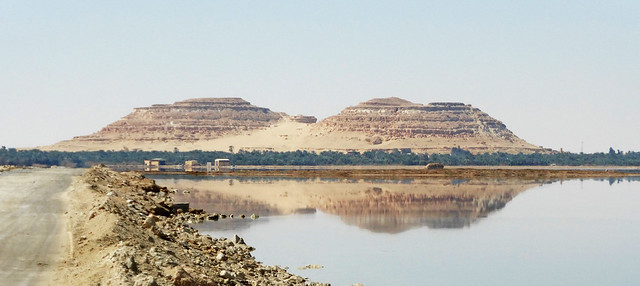
Our next stop was at the temple of Amun, perhaps the most famous of the sites in Siwa. Alexander the Great made a well-documented visit here to consult with the Oracle and have confirmation of his divinity.
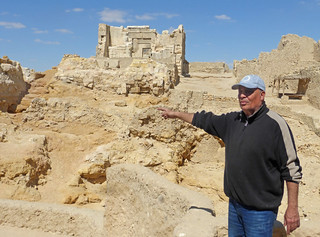
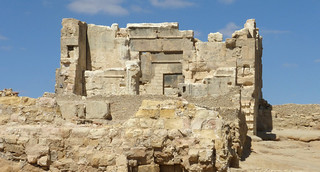
This is not one of the better preserved temples in Egypt. The inscriptions inside the temple sanctuary are barely visible and not legible. The setting on top of the mountain is quite nice, however.
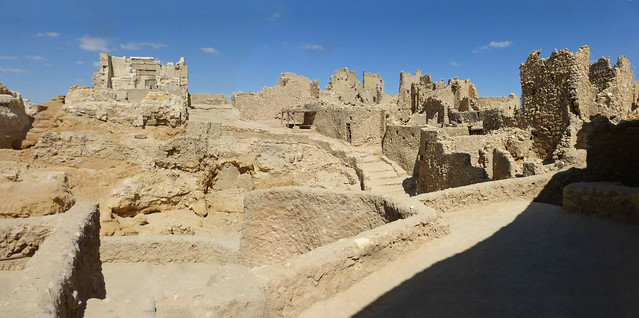
Nearby, there is a secondary portion of the temple complex dedicated to Om Obaidah that shows some nice inscriptions (perhaps a reconstruction) as well as portions of the temple reportedly destroyed by a chief of police to salvage the stone for a home and police station in 1890.


A hundred meters or so further on down the road, we came to Cleopatra's pool, one of the most popular spots for a swim. There was a large group of young men in the pool, and I came to discover later that on the day before his wedding, a Siwan groom will traditionally gather fifty of his friends for a swim. Perhaps this was such an occasion.

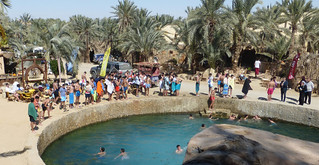
We stopped at the pool and its adjacent Tet n Joba restaurant for a cold drink. The fresh lemonade with mint was welcome at this point.


From Cleopatra's pool, we moved on to the next mountain, Gebel Mawta, the mountain of the dead. This ancient cemetery contains several well preserved tombs from Roman/Greek times. We spent a good deal of time examining the paintings inside.

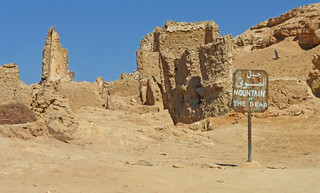
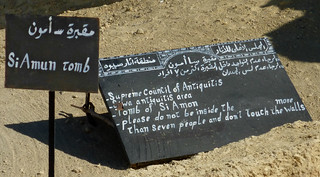
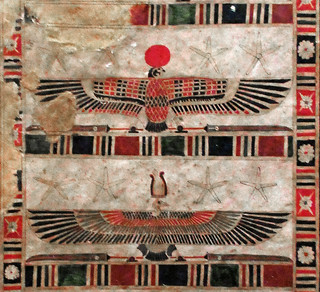
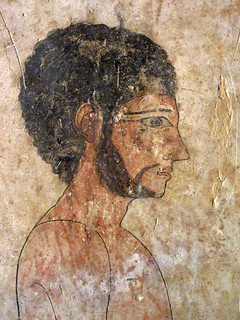


The tombs here also served as shelters during World War II as Siwa changed hands between the Axis and Allies several times. Incidentally, the interim years between WWI and WWII were a time of some brutal oppression in this general area and to the west in Libya under the direction of Italian General Rudolfo Graziani who is known as the "butcher of Fezzan."
The Gebel Mawta turns out to be an excellent location for photographing the other mountains and surrounding terrain.
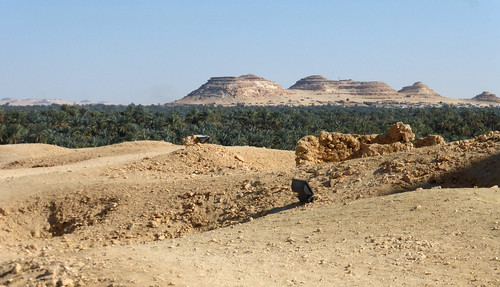
We next moved on The Shaly. At one time this was the entire community of Siwa. Dating back to 1200 and once occupied by all 200 to 600 residents of Siwa, this fortress community was made from the local salt and mud brick compound know as karshef. While Siwa has virtually no precipitation on an annual basis, a three-day rainstorm in 1926 virtually destroyed the entire Shaly. It has been restored in the past few years as a tourist attraction. When Linda first visited in 1992, it was not permitted to enter the ruins, but the restored version is now open. We entered through the Siwa Shaly Bazaar and climbed through the restored ruins for about a half hour.
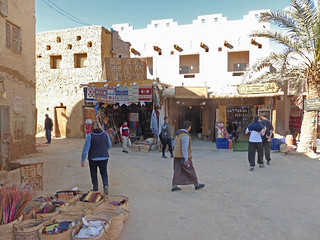
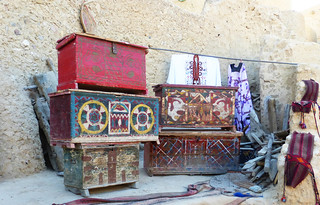
I regret not taking a picture from the distance to capture the entire Shaly. This picture taken from inside provides a pretty good look at the restoration. One of our souvenir books contains a photo from 1900 for comparison.
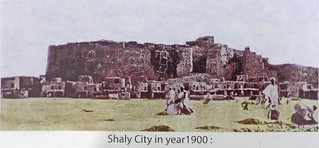
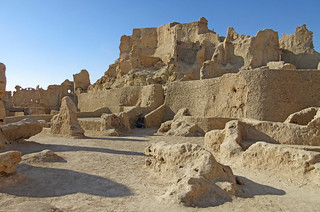
Our final stop was at Fatnas Island on Siwa Lake, also called "Fantasy Island" to watch the sunset. A fair number of people were gathered at this coffee shop awaiting sunset. A few paddle boats were available for hire at the dock and some people took advantage of that to watch from the surface of the lake. The dock is of unusual construction. Coming from Minnesota, I thought I had seen all possible configurations for a dock but mud layered on palm logs was a new one!

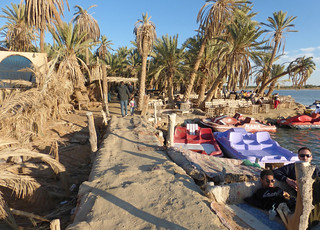
The sunset was worth the wait.
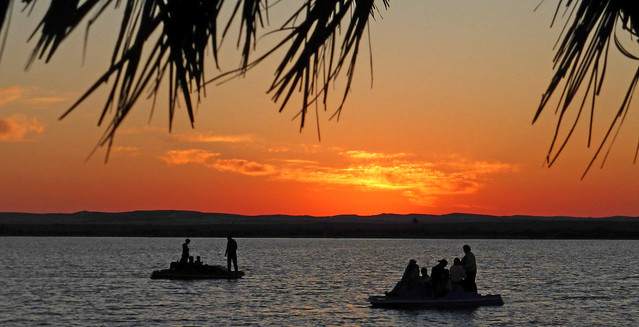
By now it was dinner time and we took the recommendation of one of our drivers to visit El Mbruoaa Inshal restaurant located on the second floor on the town square. Attractive as the traditional Egyptian seating was to some, I opted for the rather conventional western style table and chairs.

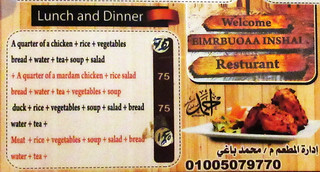
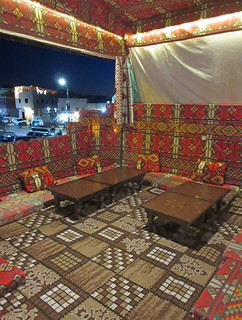
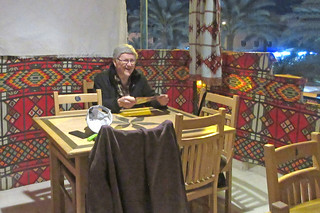
Dinner of a quarter chicken was tasty and the lentil soup was passable. The dinner price of 75EGP ($2.50) seemed reasonable.
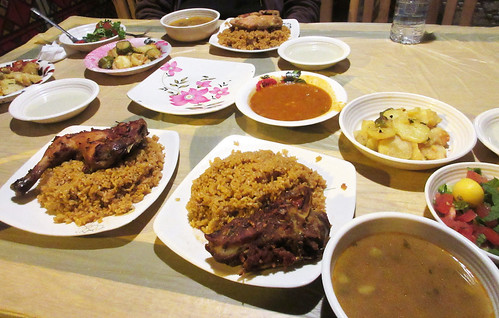
The silverware was not as sturdy as Linda hoped, as it changed shape while cutting her meat.
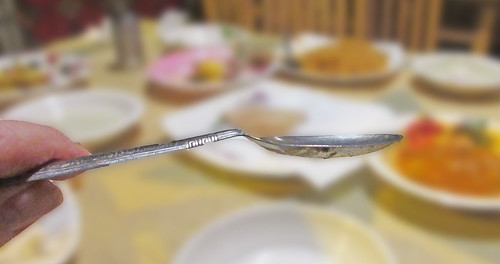
Once again we retreated to the town square to sit for tea and watch people for a while before returning to the hotel where we took advantage of the Internet access in the lobby.
There are many more pictures to browse at this Flickr Album





No comments:
Post a Comment